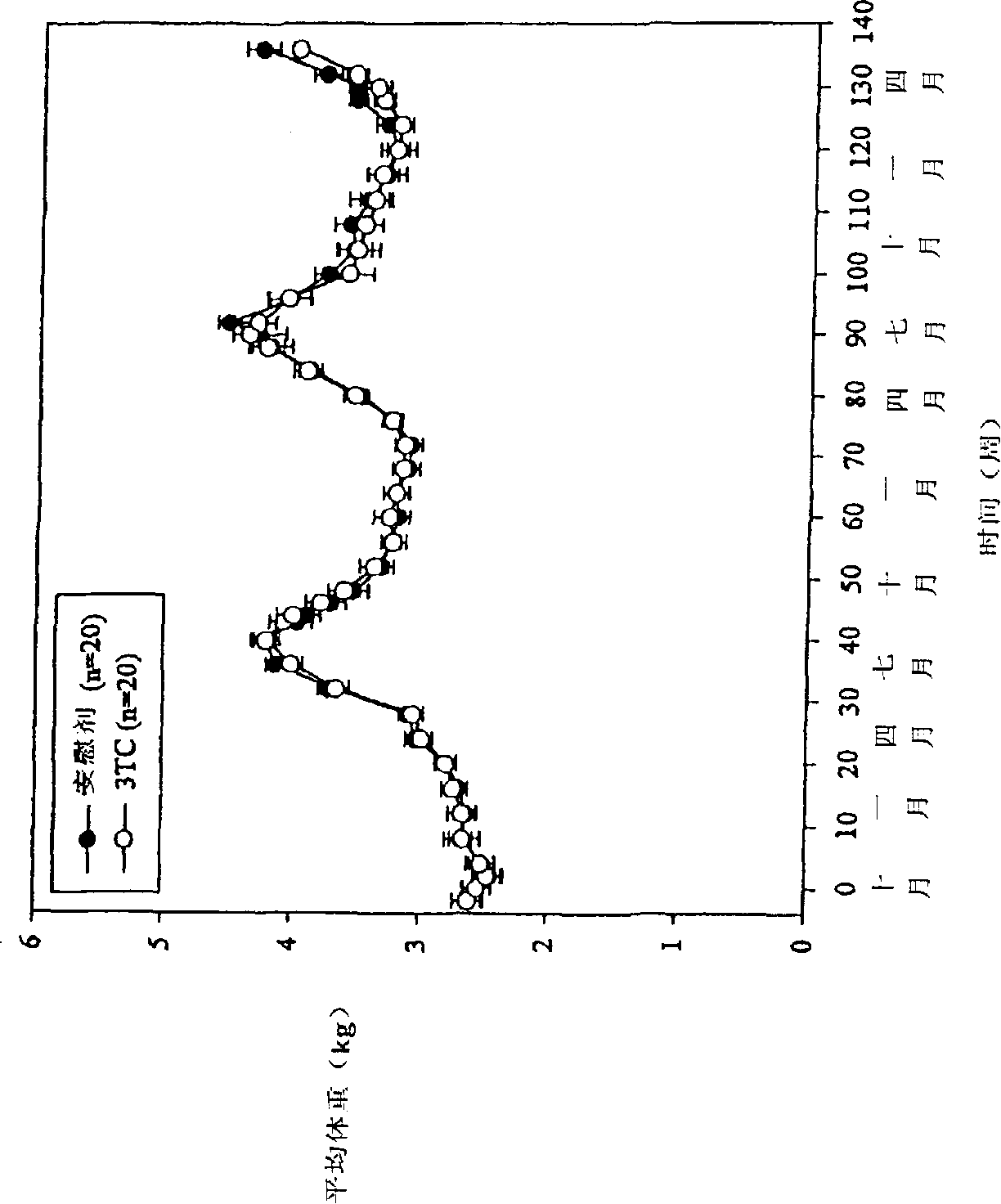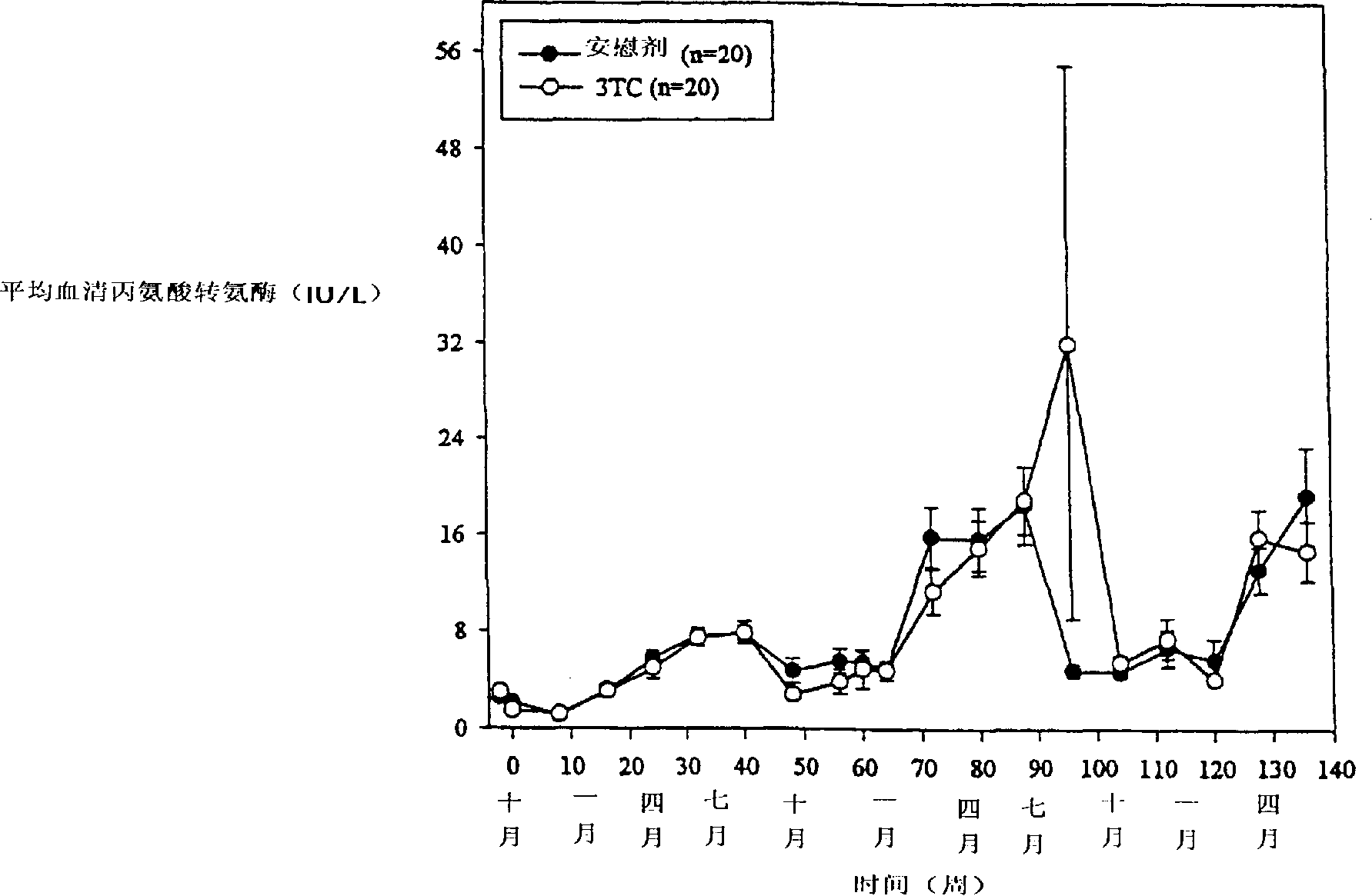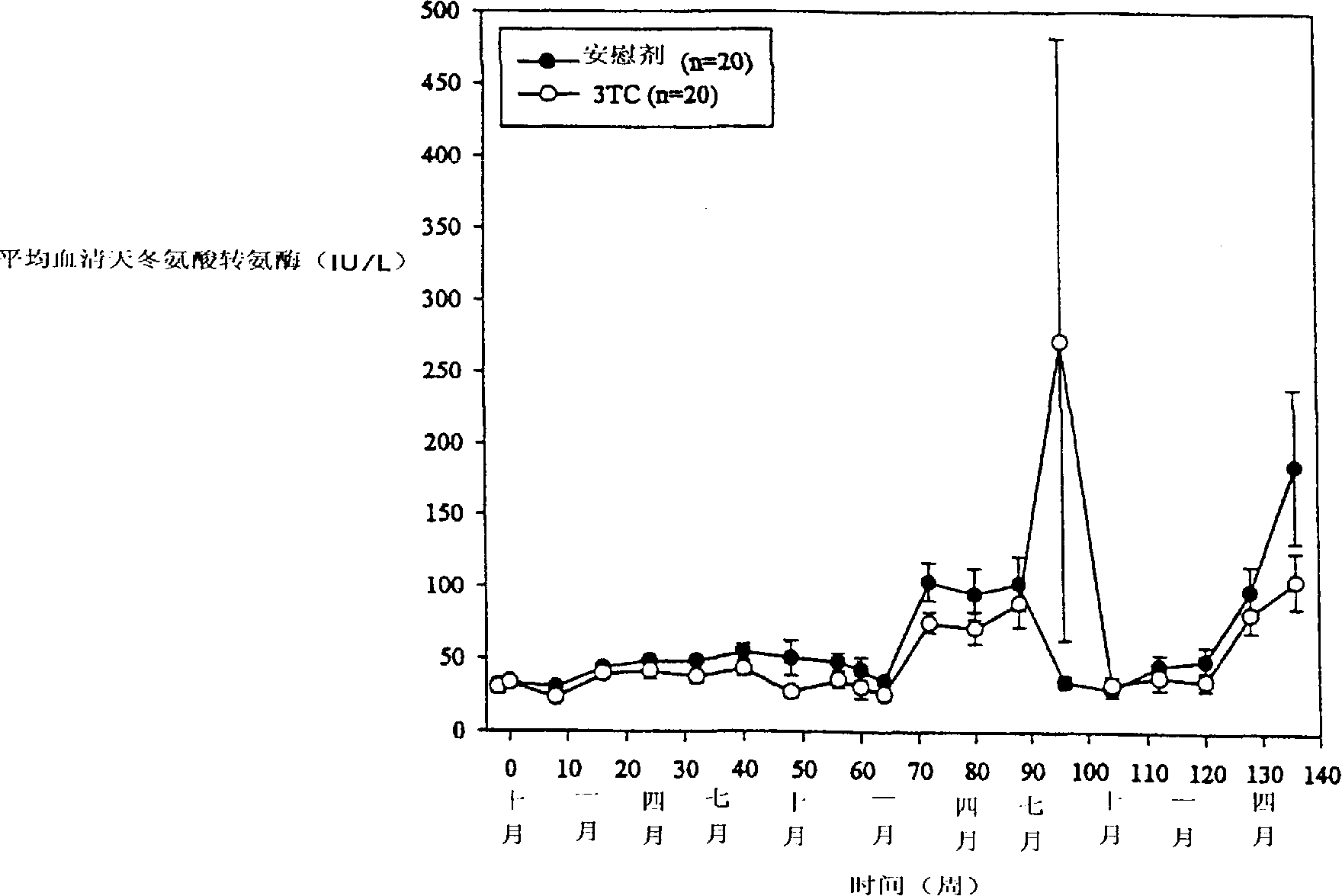Method for inhibiting development of liver cancer and increasing survival in chronic hepadnavirus infection
A chronic infection, hepatitis B virus technology, applied in the direction of pharmaceutical formulations, organic active ingredients, medical preparations containing active ingredients, etc., can solve problems such as inability to evaluate
- Summary
- Abstract
- Description
- Claims
- Application Information
AI Technical Summary
Problems solved by technology
Method used
Image
Examples
Embodiment 1
[0026] This example shows the development of chronically infected woodchucks. The woodchuck is the offspring of female and male mice raised in the laboratory, and the parents were seronegative for WHV infection markers when they gave birth. At the age of 3 days, each woodchuck was subcutaneously inoculated with 100 μl of 10-fold diluted WHV7-P-1 woodchuck hepatitis virus. At 3 months old, the woodchuck was tested positive for WHV surface antigen (WHs); at 6 months old, it was confirmed to still be WHs antigenemia. As additional markers of chronic infection, each woodchuck in the lifetime study tested positive for serum WHV DNA and anti-WHV core antibodies at six months of age. Before 3TC treatment, the baseline level of serum activity of liver enzyme γ-glutamyl transpeptidase (GGT) was determined to be lower than 5IU / L. According to the above criteria, two groups of 20 chronic WHV carrier woodchucks aged 7 to 8 months were selected and divided into treatment group and contro...
Embodiment 2
[0028] This example illustrates a 3TC dosing regimen for the treatment of chronically infected woodchucks.
[0029] At first, it was used by Raymond F. 3TC synthesized by Dr. Schinazi. Later, a commercially available 3TC (from Glaxo Wellcome) was used. 3TC was orally administered as an aqueous solution to each woodchuck in the treatment group. A control group of woodchucks received water as a placebo. To ensure ingestion, water or 3TC was added to 2-3ml semi-liquid diet, given via oral feeding syringe. The amount of 3TC or placebo was adjusted each time the woodchucks were weighed during the study to reflect changes in body weight. The treatment group received 3TC orally at a dose of 5 mg / kg body weight / day from the beginning of the study to the 42nd week of treatment. After week 42, the treatment group received a dose of 15 mg / kg / day.
Embodiment 3
[0031] This example illustrates the effect of treatment of chronically infected woodchucks with 3TC or placebo on body weight and parameters measured in post-treatment blood samples. Such as figure 1 As shown, there was no difference in mean body weight between the placebo group (•) and the treatment group (o) during the first 136 weeks of the study. Both groups showed a gradual increase in body weight, with a slight decrease after week 40, consistent with a normal annual rhythm.
[0032] During the first 64 weeks of the study, ALT ( Figure 2A ) and AST ( Figure 2B ) average serum levels were slightly higher, but the increase from the 64th week to the 88th week was more significant. Then, at weeks 96 and 104, mean AST and ALT activities decreased in the control group. In the group receiving 3TC, it was seen that the activities of both enzymes continued to increase at 96 weeks. Then, at week 104, the mean serum activity of both ALT and AST decreased in the 3TC group. Th...
PUM
 Login to View More
Login to View More Abstract
Description
Claims
Application Information
 Login to View More
Login to View More - R&D
- Intellectual Property
- Life Sciences
- Materials
- Tech Scout
- Unparalleled Data Quality
- Higher Quality Content
- 60% Fewer Hallucinations
Browse by: Latest US Patents, China's latest patents, Technical Efficacy Thesaurus, Application Domain, Technology Topic, Popular Technical Reports.
© 2025 PatSnap. All rights reserved.Legal|Privacy policy|Modern Slavery Act Transparency Statement|Sitemap|About US| Contact US: help@patsnap.com



